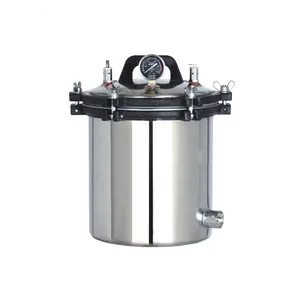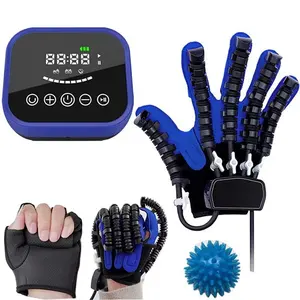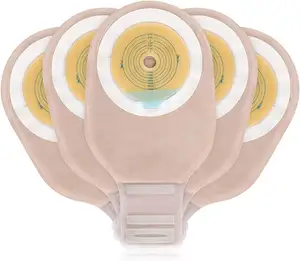Popular in your industry
















































































































































































































Top categories
About handicapped devices
Within the realm of handicapped devices, a diverse range of equipment exists to enhance the quality of life for individuals with mobility challenges. These devices are engineered to provide support, stability, and increased independence, catering to various needs and preferences. Alibaba.com showcases a comprehensive selection of these essential aids, designed to meet the highest standards of functionality and comfort.
Types and Features of Handicapped Devices
The spectrum of handicapped devices spans from mobility scooters to walkers for handicapped people, each with unique characteristics to address different mobility issues. Mobility scooters for handicapped individuals come in various models, such as three-wheeled for maneuverability in tight spaces, and four-wheeled for enhanced stability. Some scooters feature power mobility for those requiring additional assistance, while used mobility scooters offer a cost-effective alternative without compromising quality. Walkers also vary, from basic frames suitable for indoor use to advanced handicap walkers with seats and wheels, designed for outdoor use and greater distances. Each product is tailored to fit the user's specific mobility needs, providing a range of options to enhance their daily life.
Structure and Durability of Mobility Devices
The structural design of handicapped devices is a critical factor in their effectiveness. For instance, disabled mobility scooters typically feature a robust chassis with a low center of gravity to ensure stability. The inclusion of components such as adjustable armrests, swivel seats, and extendable footrests not only enhances comfort but also aids in the ease of transfer from the scooter. Handicap walkers, on the other hand, may have a foldable design for easy storage and transport, with ergonomic grips and lockable wheels to provide secure support when stationary.
Materials and Comfort in Handicapped Devices
The materials used in handicapped devices are chosen for their durability, comfort, and lightweight properties. Aluminum alloy, for example, is widely used for its strength-to-weight ratio, making devices easy to maneuver without sacrificing structural integrity. PVC and nylon are selected for areas in contact with the user, such as handles and seating, due to their resilience and ease of cleaning. These materials also contribute to the overall comfort, ensuring that users can utilize the devices for extended periods without discomfort.
Business Usages and Applications
In the business realm, assistive technology for disabilities is indispensable in sectors like healthcare, where patient mobility is paramount. For example, mobility scooters enable patients to navigate hospital corridors independently, reducing the need for staff assistance. In rehabilitation centers, adjustable walkers aid in physiotherapy, allowing for tailored support as patients regain strength and mobility. These devices not only create business value by enhancing service quality but also aid in the recovery and independence of individuals, thereby improving overall patient satisfaction.
Functions and Tasks of Handicapped Devices
The primary function of handicapped devices is to assist individuals with mobility impairments. Mobility scooters enable users to travel longer distances without physical strain, while walkers provide the necessary support for those with limited balance and strength. Advanced models may include additional functions such as stair-climbing abilities, or convertible features allowing a walker to transform into a temporary seat.
Distinctive Features and Selling Points
Unique features of handicapped devices serve as their selling points. For instance, mobility electric scooters may boast intuitive control panels, adjustable speed settings, and emergency braking systems. Walkers might offer quick-collapse mechanisms for easy storage, or built-in accessories like baskets and trays for carrying personal items. These distinctive characteristics not only set them apart from competitors but also cater to the nuanced needs of users.
Benefits and Positive Outcomes
The benefits of handicapped devices extend beyond mere mobility. They empower users with independence, enhance social participation, and improve the overall quality of life. The psychological uplift that comes from being able to move freely is immeasurable, and the physical advantages of engaging with the community and maintaining an active lifestyle are substantial.
How to Use and Operate Handicapped Devices Effectively
Effective operation of handicapped devices is crucial for maximizing their benefits. For mobility scooters, this involves understanding the control mechanisms and how to navigate different terrains safely. For walkers, users must learn the correct posture and gait to prevent falls. Proper training and guidance on the use of these devices are essential for ensuring safety and confidence among users.
How to Choose the Right Handicapped Device
Choosing the right handicapped device involves assessing the user's physical capabilities, environment, and personal preferences. Factors such as weight capacity, ease of transport, and the type of terrain the device will be used on are crucial considerations. Consulting with healthcare professionals can also provide valuable insights into the most suitable options.
How to Clean and Maintain Handicapped Devices
Cleaning and maintaining handicapped devices are vital for ensuring their longevity and functionality. This includes regular checks of the battery life for electric scooters for handicapped users, tire inspections, and cleaning of all surfaces to prevent the buildup of dirt and germs. Scheduled maintenance checks can help identify any potential issues before they become problematic.
How to Install and Assemble Handicapped Devices
Installation and assembly of handicapped devices can vary in complexity. Some devices, like certain walkers, require minimal assembly and can often be done by the user or a caregiver. In contrast, installing a mobility scooter car lift may require professional assistance to ensure it is securely fitted and operates correctly.
Target Audience and Meeting User Needs
The target audience for handicapped devices includes individuals with varying degrees of mobility challenges. Products are designed with the user in mind, whether it's a senior citizen who requires a walker with a comfortable seat or an active adult who prefers a high-performance mobility electric scooter. Understanding the needs and preferences of these diverse groups is key to developing devices that truly enhance their quality of life.
How do mobility scooters enhance the independence of handicapped individuals?
Mobility scooters provide handicapped individuals with the ability to move freely and navigate spaces without assistance. They are designed to tackle various terrains, and features like swivel seats and adjustable armrests cater to the user's comfort. The independence gained from these devices can significantly improve the quality of life and mental well-being of users.
What considerations should be made when selecting a walker for handicapped people?
When choosing a walker for handicapped people, it is important to consider the user's height, weight, and strength. Walkers with seats offer a place to rest, and those with wheels provide easier mobility. The choice between a standard walker and one with more support, like a handicap walker with seats, depends on the individual's balance and endurance levels.
Are there any specific maintenance tips for disability electric scooters?
Maintenance of disability electric scooters involves regular battery charging and care, tire inspections, and cleaning of the scooter's body to prevent dirt buildup. It's also crucial to check the brakes and control system for responsiveness. Following the manufacturer's guidelines will ensure that the scooter remains safe and functional for daily use.












































